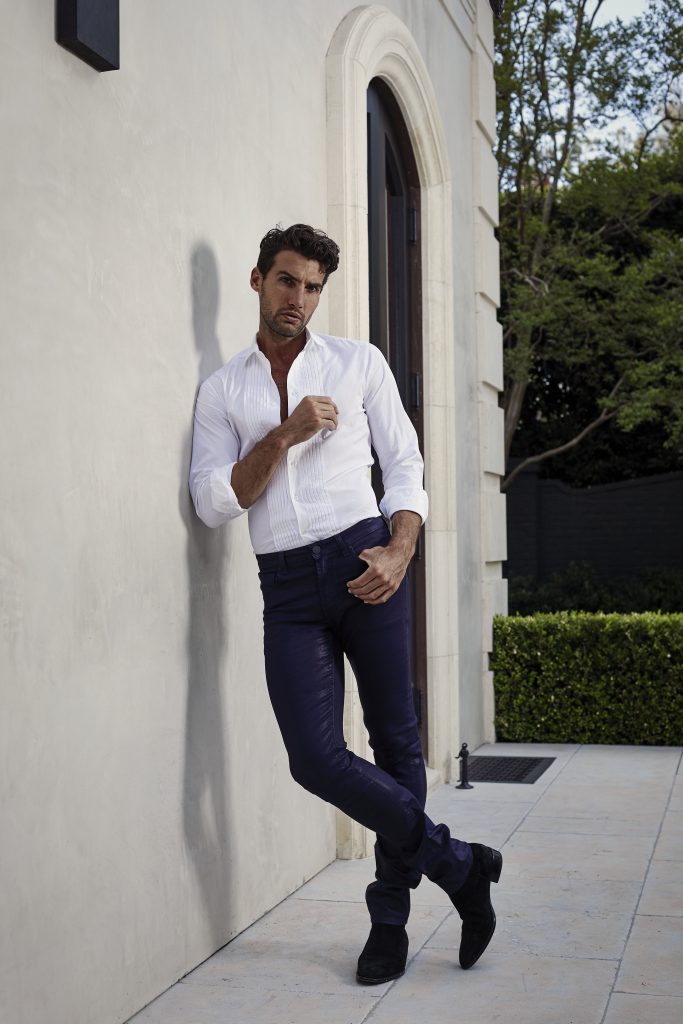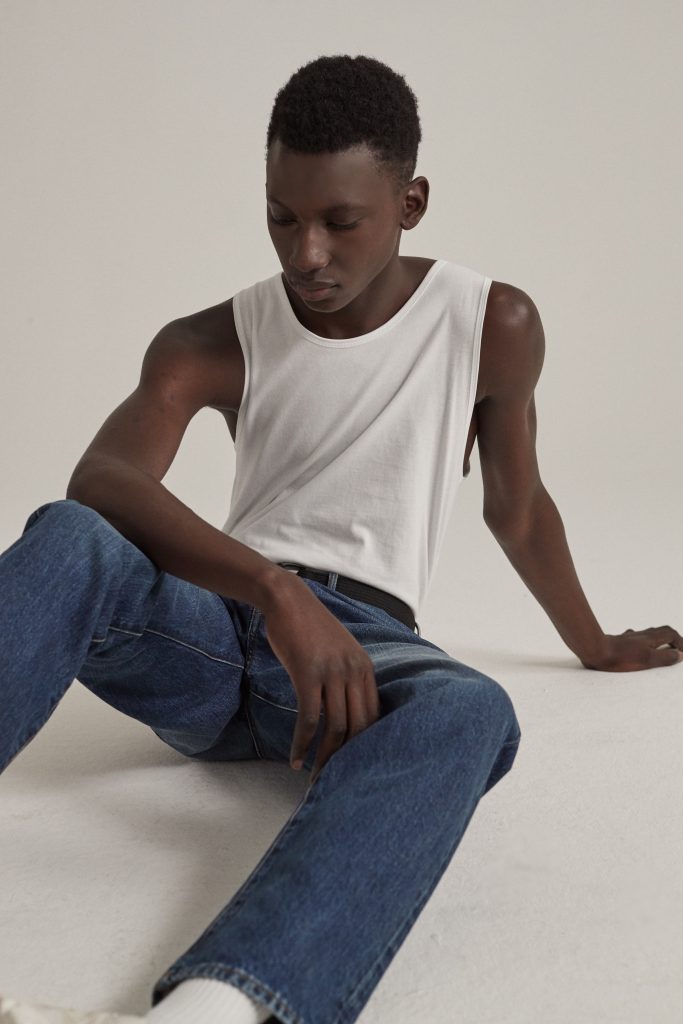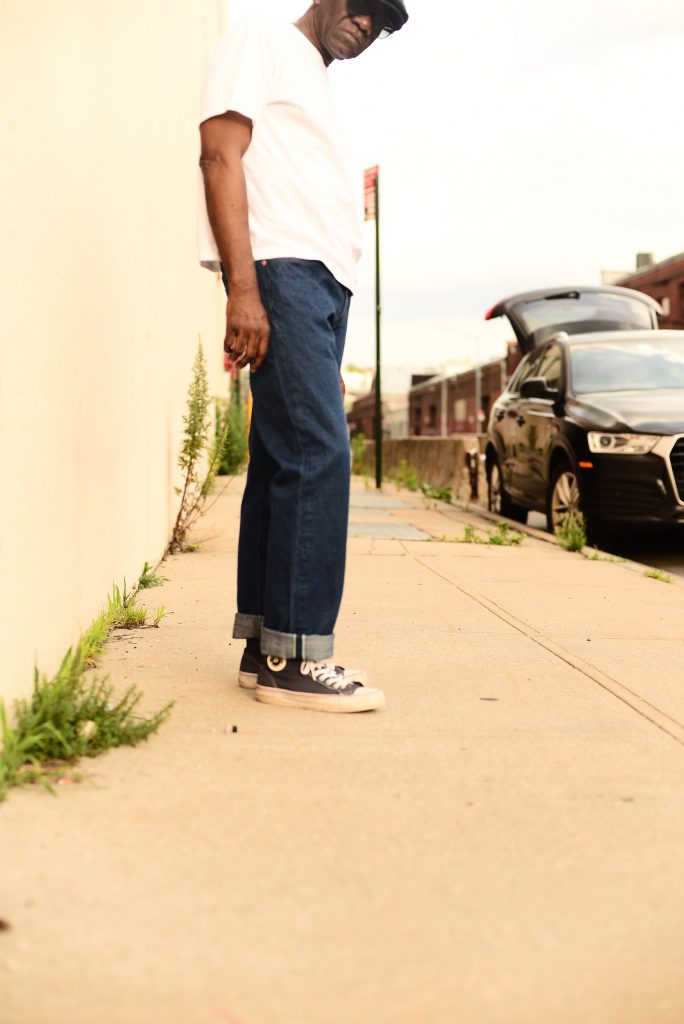WHAT’S DRIVING MEN’S DENIM BUSINESS IN THE U.S.?


What’s driving men’s denim business in the U.S.? Eric K. Goldstein can answer that question easily. A lifelong veteran of the industry, his business decisions of late have been based on four key themes: adaptation, sustainability, innovation, and originality.
Goldstein co-founded the New York City store and brand Jean Shop in 2003, finding great success among denim connoisseurs. But on May 1 of this year, he shuttered his sole SoHo location and opted to sell his product exclusively online. “We’re doing very well without [the store],” he reports. “The customer has voted to shop online.”
In addition to adapting to the “clicks over bricks” trend, Goldstein has launched denimrepair.com, an aptly named service that embraces the sustainability movement by repairing and reimaging pre-loved jeans. In addition to providing services to individual clients (repairs generally run from $25 to $65), the company is working with two large jeans brands that have implemented take-back programs for their used denim. It’s also in discussion with other brands for use of its expertise and services.
Denimrepair.com has also refurbished hundreds of pairs of vintage Jean Shop jeans that Goldstein now sells for around $300 each. He also works with new brands and encourages them to adapt an innovative and original approach to denim design or expect to fail. “I think there are way too many brands out there in the men’s denim world,” he says. “Many newcomers don’t have a clear point of view and lack a reason for being.”
A guy who’s always had his finger on the denim pulse, Goldstein continues to cover the four aforementioned key topics that are pushing the sector forward into 2020 and beyond. Here is a closer look at each of them.
Adaptation
“The main issue seems to be that shopping in a store seems passé,” notes Bill Curtin, founder of the BPDExpo denim-fabric show that is held biannually in New York. “So for most stores, an online shopping alternative is key.”
This obviously applies to denim brands and to stores as well. While just a few years ago it would be unthinkable to order jeans without trying them on, online purchasing has now become the norm—and most men’s denim labels are embracing this change. Mark D’Angelo, vice president of men’s sales at Liverpool Jeans Company, which launched its men’s product about a year and a half ago, says Liverpool’s growth via online subscription-box services such as Stitch Fix and Trunk Club has been “gangbusters” for the brand. And that’s on top of online Liverpool sales done by conventional retailers. “The majority of our retail business, outside of specialty stores, is on e-commerce. We have a 300-specialty store distribution in our first year, and we’re doing strong e-comm sales with Nordstrom and Bloomingdale’s. Our performance there continues to grow at the same time that sales on our own webshop have increased.”
For Trinidad Garcia III, founder of the new SoCal-based denim line Trinidad3, buying online works best for customers who are already familiar with his fledgling brand. “Once our customers know their size, the online platform makes it convenient for them to order and reorder. The website has helped us grow awareness of the brand and is another channel of communication with potential customers. However, for new customers, online has been a challenge. Most shoppers online are also looking for bargains. With a higher price point jean and no way to try it on, consumers think twice about purchasing online.”
Unlike most, Sean Rudes and Steven Dann, co-founders of LA-based Monfrère, still prefer selling their premium jeans the old-fashioned way, in the 52 physical locations of such key accounts as Barneys, Bergdorf Goodman, Jeffrey, and Selfridges. Their successful brand’s online sales account for only 25 percent of their business, an anomaly today but evidence that brick-and-mortar can still yield positive results.
Sustainability
Attend any denim-centric trade show today and the chances of hearing the words “sustainable” or “sustainability” within the first two minutes are about as likely as spying a pair of blue jeans there. From Kingpins to Denim Days, eco-friendliness and re- or upcycling is the No. 1 topic of discussion–and thus a huge factor when selling denim.
Two examples: Japan’s Fast Retailing, the parent company of Uniqlo, J Brand, and Theory, recently held a well-attended press event at its three-year-old Jeans Innovation Center in Gardena, California to showcase sustainability efforts across its brand portfolio. In addition, industry insiders are eagerly awaiting the opening of the Vidalia Denim mill in Vidalia, Louisiana this fall. The $50 million state-of-the-art facility, housed in a former Fruit of the Loom factory, will be the first major denim mill to operate Stateside since Cone Mills shut down its White Oak mill at the end of 2017.

Likewise, Saitex, one of the greenest garment factories in the world, has promised to open a branch in Los Angeles in October, followed by another in New York by 2020. Saitex is also the licensing partner of Edwin USA, the newly launched branch of the iconic Japanese denim brand Edwin. Creative director Catherine Ryu, formerly of Citizens of Humanity, is especially excited to be associated with a sustainable brand and factory. “We’re manufacturing in the most thoughtful and ethical way. Sustainability truly inspired me on this leg of my career journey,” she says.
“In every meeting with a buyer or designer, sustainability comes up,” notes Goldstein. “Of course, how you define sustainable is a whole different conversation. The other key points of discussion are comfort, stretch, and pricepoint.”
But not every brand is aboard the sustainable bandwagon just yet. Liverpool’s D’Angelo says it will be “probably another four to six months” before it launches sustainable product. And while he suspects it might appeal to some younger consumers who are more “socially aware,” he’s doubtful it will resonate with most guys. “While it’s something more people are hearing about, at the end of the day I don’t know that the average consumer or the larger population will initially be that well-versed on sustainability. Or willing to pay more for it.”
Innovation
Suppliers from fabric mills to brands are keen on creating the latest and greatest, pushing forward the standard five-pocket. They’re doing so by offering new and innovative cotton-blend fabrics and treatments.
“The next thing for denim is really innovative fabrics,” says Monfrère’s Rudes. “Many companies that have been around use very traditional, rigid, grainy, washed denim but the more modern customer who dons athletic wear wants something more comfortable. Our brand employs a proprietary Japanese stretch denim with 98 percent recovery that does not tear. This is clearly bringing denim into the future.”
D’Angelo firmly believes that “stretch is here to stay” as does Levi’s senior VP of global design, Jonathan Cheung. “People want to feel good. And feeling good is a mix of physical comfort and feeling confident in how they look. It’s pretty clear from our sales figures that this means generally slimmer, tapered jeans with stretch. Stretch is the new normal and has won its way into the majority of our jeans; tapered fits are the fastest growing section of our portfolio.”

However, D’Angelo and others also see the trend pendulum swinging back toward more classic, cotton-rich fabrics in the coming seasons. “I think selvedge is going to make its way back but more in stretch selvedge than rigid,” he says.
Christine Rucci, a longtime denim designer and independent consultant, agrees: “Men want something beefier and I think that fabric weights are definitely getting a bit heavier and a little more cotton-y.”
Modern, unique washes are also in the works. “We see continued experimentation with new wash techniques and new color ranges beyond black and indigo as the future of denim,” says Bennett Winick, president of Prps. “This is definitely our sweet spot and a strong sales driver, both DTC and at retail.”
Originality
“I believe those who follow the lead of others are those who are suffering,” says Ryu. “And part of the problem is the buyers because they say the same things to the same brands. Like ‘We’re interested in red’ and then everyone makes red. I think part of winning in this really tough market now is to show your creativity and relay a message.”
Garcia concurs. “The biggest challenge in the denim market is being able to stand out among your competitors. It truly is a sea of blue. It’s very easy to blend in and become simply another denim brand,” he says, summarizing the need for originality from denim brands, especially new ones.
LA’s Trinidad3 has indeed achieved a unique take on jeanswear. Using his background as a former Marine, Garcia has created a fresh, utility-based line that features red waistbands and other details inspired by the Marine Corps dress uniform. In addition, the fashion-forward brand has partnered with the Sabot Foundation to employ and empower military veterans. The company hires veterans and donates 10 percent of its gross sales to the foundation, which helps them in their transition back into civilian life.
Another notable newcomer is New York-based Glenn’s Denim. Founded by Daniel Lewis of Brooklyn Tailors and designed by Glenn Liburd, a guy with more than 30 years of experience in denim at brands like Levi’s, this small-batch label stresses craftsmanship and uses rare, U.S.-made selvedge fabric that is single-handedly created by a weaver in his garage in Pennsylvania. “These days, I feel like most of the new fashion launches I read about are shaped by this Silicon Valley sort of model–two guys out of business school on a mission to ‘disrupt’ the way you buy men’s socks or something like that. It strikes me as soulless, dispassionate and unauthentic, to be frank,” says Lewis. “This is a labor of love–an effort to keep one of America’s most important and cherished legacies alive. Denim was born in this country and sadly, it’s now nearly extinct in this country.”
And although those words clearly ring true for the fabric, they don’t apply to the dynamic and ever-changing fashion sector. Smart brands are getting increasingly creative; hopefully, retailers will be smart enough to introduce their innovation.


